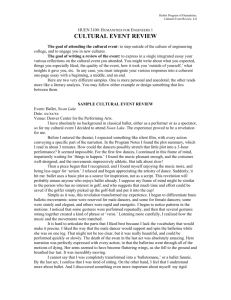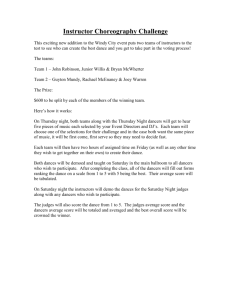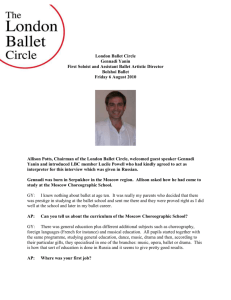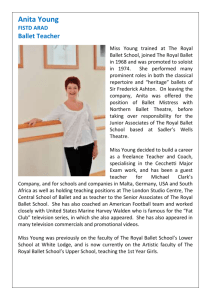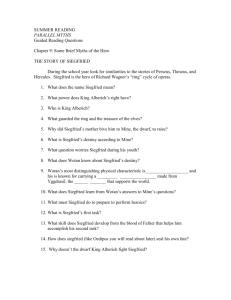Bourmeister's Swan Lake 03 - An Eye for Dance
advertisement
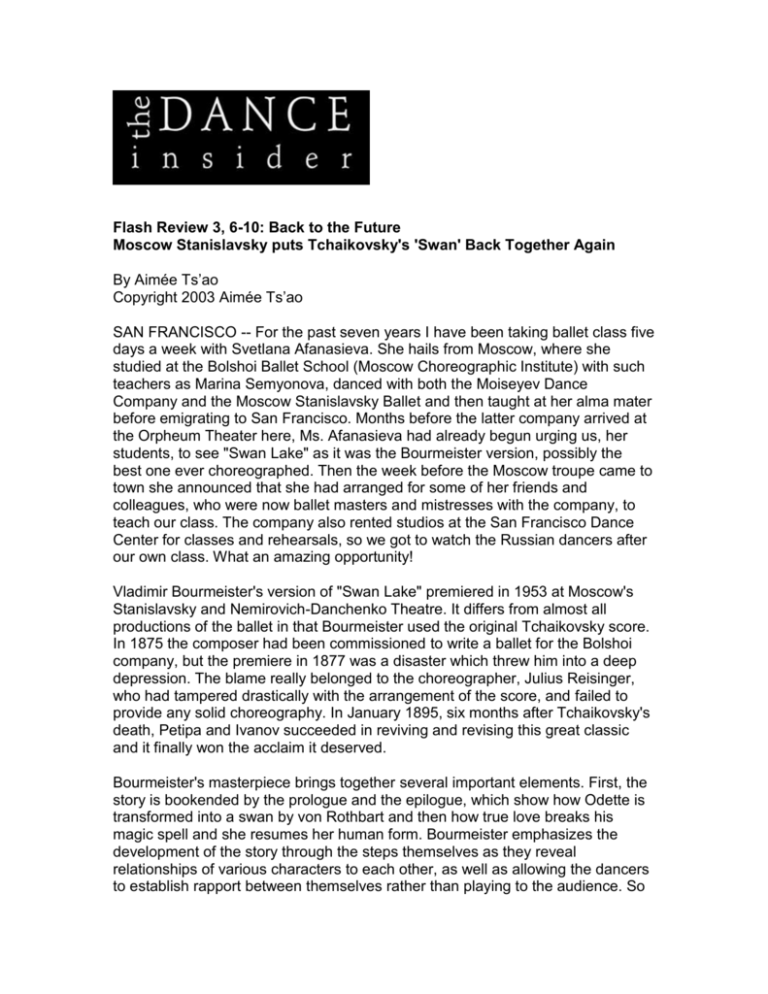
Flash Review 3, 6-10: Back to the Future Moscow Stanislavsky puts Tchaikovsky's 'Swan' Back Together Again By Aimée Ts’ao Copyright 2003 Aimée Ts’ao SAN FRANCISCO -- For the past seven years I have been taking ballet class five days a week with Svetlana Afanasieva. She hails from Moscow, where she studied at the Bolshoi Ballet School (Moscow Choreographic Institute) with such teachers as Marina Semyonova, danced with both the Moiseyev Dance Company and the Moscow Stanislavsky Ballet and then taught at her alma mater before emigrating to San Francisco. Months before the latter company arrived at the Orpheum Theater here, Ms. Afanasieva had already begun urging us, her students, to see "Swan Lake" as it was the Bourmeister version, possibly the best one ever choreographed. Then the week before the Moscow troupe came to town she announced that she had arranged for some of her friends and colleagues, who were now ballet masters and mistresses with the company, to teach our class. The company also rented studios at the San Francisco Dance Center for classes and rehearsals, so we got to watch the Russian dancers after our own class. What an amazing opportunity! Vladimir Bourmeister's version of "Swan Lake" premiered in 1953 at Moscow's Stanislavsky and Nemirovich-Danchenko Theatre. It differs from almost all productions of the ballet in that Bourmeister used the original Tchaikovsky score. In 1875 the composer had been commissioned to write a ballet for the Bolshoi company, but the premiere in 1877 was a disaster which threw him into a deep depression. The blame really belonged to the choreographer, Julius Reisinger, who had tampered drastically with the arrangement of the score, and failed to provide any solid choreography. In January 1895, six months after Tchaikovsky's death, Petipa and Ivanov succeeded in reviving and revising this great classic and it finally won the acclaim it deserved. Bourmeister's masterpiece brings together several important elements. First, the story is bookended by the prologue and the epilogue, which show how Odette is transformed into a swan by von Rothbart and then how true love breaks his magic spell and she resumes her human form. Bourmeister emphasizes the development of the story through the steps themselves as they reveal relationships of various characters to each other, as well as allowing the dancers to establish rapport between themselves rather than playing to the audience. So many other versions can seem to be a long string of variations for the soloists and big ensemble numbers loosely held together by the music and a slim plot, where it appears that the main objective is to impress with dramatic acting or brilliant technique as ends in themselves rather than contributions to a larger picture. After classes in the beginning of the week with Margarita Drozdova, Mikhail Krapivin, and Arkady Nikolaev, I am well steeped in the Moscow StanislavskyVaganova mix and I go to opening night, Wednesday, June 4, with great anticipation -- primed, as it were. As the overture begins I am letting myself sink into another world, awaiting the curtain's rise. The first surprise is that the prologue is performed to the overture. I don't need to let my own imagination place me in the fairy tale; suddenly I am there in the middle of the action. Admittedly I am a little reluctant to follow, as I want the comfort of the familiar. When the first act begins I notice the how the evocative lighting and luminescent decor and costumes designed by Vladimir Arefiev transport me into the land of make-believe. No heavy Gothic realism to weigh down my flight into fantasy. The differences in this version begin to reveal themselves. At first I find the Jester, danced by Vylacheslav Buchkovsky, not very compelling. Buchkovsky's technique is pristine, yet he is a bit muted. As time goes on a gentle humor emerges and I realize that his characterization is slowly developing, until he becomes totally endearing. The traditional pas de trois for Prince Siegfried and two anonymous girls is replaced with a pas de quatre involving two of the Prince's male friends and their partners. The choreography for their individual variations and the partnered sequences are delicious. So often in many classical ballets the dances can be rather stilted and verging on awkward, even for the most accomplished technicians, but here there is a sense of ease within and between the movements and the combinations of steps are interesting. The two men dance together with crossbows, so that ties in nicely when they persuade Siegfried to go hunting as a distraction; the bows don't suddenly appear out of nowhere. The Prince, Georgy Smilevsky, is elegant and has such beautiful technique that it you never see it as anything except the expression of many facets of the role. Then the most startling difference arrives, as the music for the "Black Swan" pas de deux, traditionally in the third act, accompanies Prince Siegfried and a young lady of the court in a pas de deux. He performs some amazing tours en l'air with a crossbow. (Jumping and turning while holding large props is not as easy as it looks.) His partner in the adagio, Anastasia Pershenkova, is exquisite. Her long lines and arching feet are made all the more wonderful by her warmth of expression and use of her eyes and head. Siegfried's attention suddenly shifts to a hunting expedition and she is crushed. I find Smilevsky dwelling too frequently in a melancholic cloud. He does need to show that side of himself, but being a young man who does enjoy his friends is equally important in order to have some contrast. Moscow Stanislavsky Ballet's Tatyana Chernobrovkina and Dmitri Zababurin in Vladimir Bourmeister's production of "Swan Lake." Photo courtesy Moscow Stanislavsky Ballet through Encore Communications. For the second act by the lake, Bourmeister has retained the Ivanov choreography. Against another beautiful set, this one evoking romantic mystery, Tatyana Chernobrovkina gives a beautiful performance as Odette, and Smilevsky responds to her allure. Here, for the first time, the small size of the Orpheum stage is painfully obvious. Up until now the dancers have cleverly adapted and managed to use the limited space so wisely that it didn't seem to be a problem. The three big Swans have nowhere to jump except on top of each other. I notice that the four Cygnets dance their famous variation, not as the usual nearly robotic marvel of synchronization, but with a gentle rounded quality. Most noticeably, their heads don't move quickly from one position to another staccato fashion, but rather in a legato way, smoothly arriving only to continue on. Chernobrovkina's transition from woman back into swan is very effective. Siegfried picks up a feather Odette has shed and kisses it. After the curtain rises on the third act Ballroom scene, even before the lights come up, the audience is applauding the set that glimmers expectantly in the shadows. The dancers enter and the costumes are even more stunning than what has come before. Siegfried is not interested in any of the potential brides and prefers to focus on Odette's feather and his love for her. Now Bourmeister's inspired version takes off. While most "Swan Lake"s rely on the four national dances, Spanish, Neapolitan, Hungarian and Polish, to represent the countries of the four Princesses, one of whom the Queen hopes Siegfried will choose in marriage, in this version, all these dancers belong to von Rothbart's entourage and come in with him as he escorts his daughter, Odile, into the ballroom. What ensues is a game of smoke and mirrors. The Prince, mistaking Odile for Odette, steps toward her and she suddenly vanishes into the crowd. Swirling red capes and Spanish dancers divert our attention. Odile suddenly appears again and just as quickly is gone. All the dancers are strong in the character dances, with Pershenkova particularly wonderful in the Neapolitan dance. This grand confusion of dancing only contributes to that in Siegfried's mind and when Odile at last stays and seduces him, he is convinced it is his true love and asks for her hand. We do get the requisite thirty-two fouettes, but to other music -- and the pas de deux isn't meant to be a showstopping technical display. It serves to further the plot. Chernobrovkina hardly resembles the swan she created in the second act, yet is not so hard-edged that the Prince would readily realize she isn't Odette. The last act and epilogue are very much different from the traditional versions. No Odette and Siegfried throwing themselves into the lake to be united by love in death. Instead von Rothbart creates a storm on the lake, flooding the shore to drown the Prince. Odette saves him by jumping into the water, thereby destroying the evil magician's power by the force of true love. She then resumes her human form as the sun rises. The dancers in this company are special. Even though the corps de ballet lacks the absolute perfection of the Bolshoi Ballet's, it still dances with the same sense of uniform style, and through focusing on remaining in character and maintaining a rapport between each other throughout the entire ballet, the dancers succeed in involving us completely. The orchestra, under Georgy Zhemchuzhin's direction, played so well I never got a chance to grimace at all the places where I normally would -- entrances for horns, violin solo for the adagio in the second act.... How rare to have all the tempi correct, yet managing to sound rich and full at the same time. Ultimately the real star of the evening is the entire production, from costumes and sets to the orchestra's playing, from the choreography itself to how meticulously it is coached, from the spirit of the dancers to the vision of the artistic director, Dmitry Bryantsev. Aimee Ts'ao, the Dance Insider's West Coast bureau chief and a founding editor of the publication, is a San Francisco-based writer, dancer and teacher.

